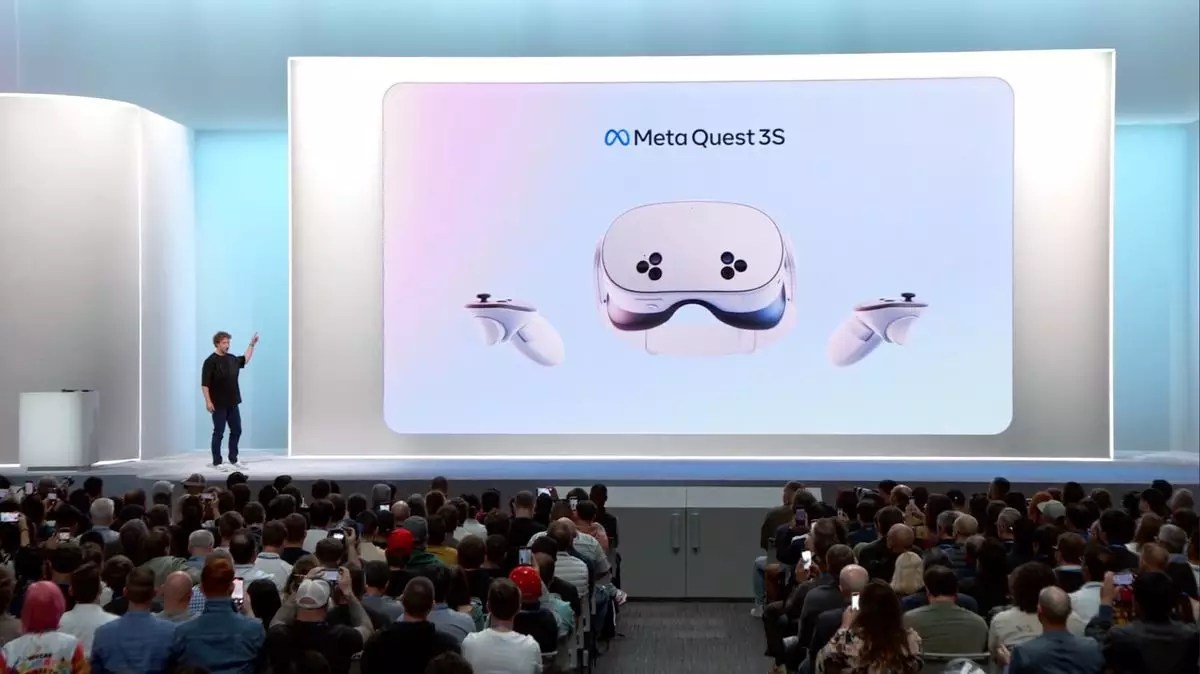Virtual reality continues to evolve, pushing boundaries and broadening horizons in technology and immersive experiences. Amidst this landscape, Meta recently announced a more budget-friendly alternative to its flagship headset, the Quest 3: the Quest 3S. Set to release on October 15, the Quest 3S is significantly more wallet-friendly while still boasting impressive features that mirror those of its more expensive counterpart.
The Quest 3S claims to attract a diverse group of users by offering a lower entry point into the world of VR. With a starting price of $300 for the 128 GB model—an impressive $200 less than the Quest 3—it sets the stage for broader accessibility to virtual reality experiences. For those who need more storage, a 256 GB version will be available for $400. This pricing strategy emphasizes Meta’s commitment to inclusivity, enabling enthusiasts and newcomers alike to step into VR without stretching their budgets too thin.
Despite the cost reduction, Meta has wisely chosen to equip both models with the same Qualcomm Snapdragon XR2 Gen 2 processor found in the Quest 3. This crucial detail suggests that, performance-wise, users can expect a virtually identical experience, including access to the same applications and immersive environments that have made the Quest 3 popular.
While the Quest 3S adopts many of the standout attributes from the Quest 3, the differences come down to refinement rather than a complete overhaul. One of the most notable changes is the substitution of advanced pancake lenses with traditional fresnels. This design alteration may influence the overall field of view, user comfort, and visual quality once the device is in use. Users might be disappointed if these lenses impact the immersive quality—yet, the trade-off may be worth it given the affordability factor.
Mark Zuckerberg, during the Meta Connect keynote, discussed the optimization of the whole system. He implied that although there are changes, they have been made with the end-user in mind, aiming to enhance the overall experience. That said, until users experience the headset firsthand, the actual impact on comfort and usability remains to be seen.
A particularly memorable moment during the keynote involved a technical hiccup when Zuckerberg’s friend Kenny attempted to showcase new VR experiences. The demo experienced a crash that left both the presenter and the audience in a limbo of uncertainty about its progression. Such mishaps are not uncommon in the tech world and served as a reminder of the complex reality of live demonstrations. However, Zuckerberg’s lighthearted acknowledgment of the situation (admitting uncertainty over the current demo status) helped mitigate the awkwardness, and the incident wasn’t as cringe-worthy as many similar live failures from tech events.
However, while that specific demonstration did not go as planned, it highlighted Meta’s push for integrating VR and traditional computing. Zuckerberg underscored the ease with which users would be able to access their Windows desktop within the virtual environment, positioning the Quest 3S as not just a gaming device, but as a supplement to more practical applications.
The launch of the Quest 3S shifts the competitive landscape of affordable VR headsets. Utilizing the much lower price point, it fills the gap left by the now outdated Quest 2, effectively phasing it out as a budget option. There are implications for avid gamers and VR enthusiasts alike, as the Quest 3S becomes a prominent contender in the budget-friendly VR market. Depending on its performance as a PC VR headset, recommendations may change, granting prime attention to a new affordable option.
As anticipation builds for its launch, many will look to the Quest 3S to define budget VR in the coming era. Will it efficiently deliver engaging experiences without pretentious features at a lower cost? Only time—and user experience—will tell. As we approach launch day, the Quest 3S promises to unfold a new chapter in Meta’s VR narrative, making high-quality virtual experiences accessible to a broader audience.


Leave a Reply